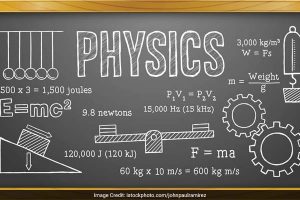Sexual Reproduction in a flowering plants


FLOWER – itis the fascinating reproductive organ of angiosperms.
It consists of:-
- Calyx
- Corolla
- Androecium
- Gynoecium


All flowering plants show sexual reproduction and look at the diversity of structures of the inflorescences, flowers and floral parts, shows an amazing range of adaptations to ensure formation of end products of sexual reproduction, the fruits and seeds. Let us understand the morphology, structure and the process of sexual reproduction in flowering plants.
PRE- FERTILISATION – STRUCTURES AND EVENTS
Hormonal and structural changes are initiated leading to differentiation and development of floral primordium.
— Inflorescences are formed which bear floral buds and then flowers.
— Androecium and Gynaecium differentiate and develop.
STAMEN
— Stamen consist of
Anther – terminal bilobed structure
Filament – long slender stalk. The proximal end of the filament is attached to the thalamus or petal.
STRUCTURE OF ANTHER
— Anther has two lobes (bilobed). Each lobe consists of two theca. Hence it is dithecous.
— Anther is a tetragonal structure which consists of four microsporangia located two in each lobe.
— Microsporangium develops into pollen sacs.
— Pollen sacs run longitudinally and contain pollen grains
- STRUCTURE OF MICROSPOANGIUM
— A typical microsporangium appears circular in outline.
It is surrounded by 4 walls. - Epidermis – protects and help in dehiscence of anther.
- Endothecium
- Middle layers
- Tapetum – nourishes the developing pollen grain


SPOROGENOUS TISSUE
It is compactly arranged homogenous cells which are present at centre of each microsporangium when the anther is young.
MICROSPOROGENESIS
—Process of formation of microspores from pollen mother cell through meiosis.
—The cells of the sporogenous tissue/microspore mother cell (2n) meiotically divide to form microspores which are arranged in a cluster of 4 cells called MICROSPORE TETRAD.
—When the anther matures and dehydrates, the microspore dissociate from each other and develop into pollen grains
—Thousands of pollen grains formed inside a microsporangium- released with dehiscence of anther.
POLLEN GRAINS
Pollen grains are male gametophyte – spherical in shape.


STRUCTURE OF POLLEN GRAIN
Pollen grains are made of 2 layered Wall,
- Exine:- Made of sporopollenin- most resistant organic matter known,
- Intine:- -Thin and continuous layer
– Made of cellulose and pectin - Germ pores
– apertures on exine where sporopollenin is absent
– forms pollen tube. - A plasma membrane surrounds cytoplasm of pollen grain.
MATURE POLLEN
— A mature pollen consist of 2 cells with nucleus (Vegetative and Generative)
VEGETATIVE CELL
- Bigger
- Abundant food reserve
- Large irregular nucleus
- Responsible for the development of pollen grain
GENERATIVE CELL
- Small
- Involves in syngamy (fuse with an egg)
- Dense cytoplasm and nucleus.
Effect of Pollen on Human:
Pollen grains cause allergy and bronchial afflictions Leading to chronic respiratory disorders like asthma, bronchitis Eg :- Parthenium (carrot grass)
POLLEN PRODUCTS:
- Rich in a nutrient.
- Pollen tablets and syrup
– food supplements
– claims to increase the performance of athletes and the race horse. - Period of viability
Once shed the pollen grains have to land on the stigma before they lose viability if they have to bring about fertilization.
Period of viability depends on temperature and humidity. Example:- cereals takes 20 minutes and members of rosaceae, leguminoseae, solanaceae take months.
Pollen grains stored by CRYOPRESERVATION.
Used in crop breeding programmes.
PISTIL, MEGASPORANGIUM AND EMBRYO SAC :
GYNAECIUM – female reproductive part of flower
— Gynaecium with 1 pistil – Monocarpellary
— Gynaecium with more than 1 pistil – Multicarpellary
— Fused pistil – Syncarpous
— Free pistil – Apocarpous.
PISTIL
Pistil consist of
- Stigma
- Style
- ovary
- ovarian cavity
- placenta
- Ovules arise from the placenta.
- single ovule – wheat, paddy
- Many ovules – papaya, watermelons, etc


MEGASPORANGIUM (OVULE)
— The ovule is a small structure attached to placenta.
— Funicle – stalk by which ovule is attached to placenta
— Hilum – junction between ovule and funicle
— Integuments – protective envelops
— Micropyle – small opening at the tip of ovule into where pollen tube enters
— Chalaza – basal part of ovule
— Nucellus (2n)-mass of cells enclosed in integuments. Has abundant food reserve.
MEGASPOROGENESIS
— The process of formation of megaspores from megaspore mother cells is called MEGASPOROGENESIS.
— Megaspore mother cells divide meiotically to form 4 megaspore (haploid)
— out of 4, only 1 megaspore is functional and forms gametophyte and the rest degenerate.
FEMALE GAMETOPHYTE (EMBRYO SAC)
— The embryo sac develops from the functional megaspore (n).
— MONOSPORIC DEVELOPMENT:- formation of embryo sac from a single megaspore.
FORMATION OF EMRYO SAC
— The nucleus of functional megaspore divides mitotically to form 2 nuclei which move to opposite poles forming 2-nucleate embryo sac.
— Two more mitotic nuclear division results in 4-nucleate and later 8- nucleate stages of the embryo sac.
— Then cell wall is laid down leading to the organization of female embryo sac.
STRUCTURE OF EMBRYO SAC
— Egg apparatus – present at the micropylar end and consist of 2 synergids and 1 egg cell
Synergids have cellular thickenings at micropylar tip called FILIFORM APPARATUS – guides the pollen tube into the synergid
— Antipodal – 3 cells present at chalaza end
— Polar Nuclei – Large central cell.
POLLINATION
— The transfer of pollen grains from the anther to the stigma of a pistil is called pollination.
— Based on the source of pollen, pollination is of 3 types:-
– AUTOGAMY
– GEITONOGAMY
– XENOGAMY
1. AUTOGAMY
Transfer of pollen grains from the anther to the stigma of the SAME flower.
REQUIREMENT:-
Synchrony in pollen release and stigma receptivity.
Closeness of stigma and anther
Chasmogamous flowers- flowers with exposed anthers and stigma
Cleistogamous flowers-flowers which do not open at all
Cleistogamy is disadvantageous because there is no chance of variation.
Ex:- oxalis ,viola
- GEITONOGAMY
— Transfer of pollen grains from anther to stigma of another flower of the same plant.
— Genetically similar
Ex:- cucurbits
- XENOGAMY
Transfer of pollen grains from anther to stigma of another flower of different plant
Genetically different pollen grains are brought to the stigma.
Agents of Pollination:
1) Abiotic agents:
a) Wind
b) Water
2) Biotic agents:
a) Insects
b) Birds
c) Bats
d) Reptiles
e) Mammals
Adaptations in flowers for Pollination
I. Wind Pollination
pollen grains:– light, non- sticky, winged
Anther:- well exposed
Stigma:- large and feathery
Flower:- one ovule, arranged as inflorescence
Ex: corn cob, cotton, date palm
II. Water Pollination
– Bryophytes, Pteridophytes, Algae
pollen grains: protected by mucilaginous covering
Ex: Freshwater plants- Vallisneria, Hydrilla
Seagrass- Zostera
Main features of wind and water pollinated plants
– produce pollen grains in large no.
– do not produce nectar
III. Insect Pollination
– Flowers : large, colourful, fragrant, rich in nectar
– Pollen grains : sticky
– Stigma : sticky
Certain rewards to pollinators:
nectar and (edible) pollen grains as foods
provide safe place for laying eggs
Ex : Amorphophallus, Yucca
Outbreeding Devices
Continued self – Pollination – Inbreeding depression
Ways to avoid Self-pollination :
(i) Pollen release & stigma receptivity – not synchronised
(ii) Stigma and anther – placed in different positions
(iii) Self-incompatibility
(iv) Production of unisexual flowers
Eg: castor, maize (prevents autogamy)
papaya (prevents autogamy & geitonogamy)
Pollen – Pistil Interaction
All events – from deposition of pollen on stigma till the pollen tube enters the ovuleis called Pollen-pistil interaction.
• Recognition of compatible pollen
• Germination of pollen grains
• Development of Male Gametophyte
Artificial Hybridization
Crossing diff varieties of species- hybrid individual- with desirable characters of the parent plants
desired pollen grains for pollination- stigma protected from contamination
Emasculation: removal of anther
Bagging: flower covered- bag made up of butter-prevent contamination of stigma from unwanted pollen
Bagged flower- attains receptivity – mature pollen grains- dusted on the stigma – rebagged – fruits allowed to develop
Double Fertilisation
Syngamy
– pollen tube releases male gametes into synergids
– fusion of 1 of male gametes and egg cell
– fusion of 2nd male gamete and polar nuclei =Triploid endosperm nucleus- PEN (Triple Fusion)
– PEN – now called Primary Endosperm Nucleus – Endosperm
Post-fertilization Events
All events that occur in a flower, after double fertilization is called Post- fertilization events
Major events are :
(i) Development of endosperm
(ii) Development of embryo
(iii) Maturation of ovule into seed
(iv) Maturation of ovary into fruit
Endosperm
† Two types of endosperm development :
(i) Free nuclear type (common method)
(ii) Cellular type
† Cells of endosperm– store food materials- used for developing embryo
† Non – Albuminous / Non-Endospermic seeds- endosperm completely utilized – before maturation of seeds. Ex: pea
† Albuminous / Endospermic seeds- a portion of endosperm remain in mature seeds. Ex: castor
Embryo
† Embryogeny – early stages of embryo development
† Zygote à Proembryo à Mature embyo (heart-shaped)
Embryo consists of:
– embryonal axis
– cotyledons
– plumule
– radicle
Monocotyledonous Seed
– Scutellum = Cotyledon
– Coleorrhiza: undifferentiated sheath covering radical & root cap
– Coleoptile: sheath covering plumule
Seed
– Fertilized and mature ovule develops into a seed.
The seed consists of:
– cotyledon(s)
– embryonal axis
– Seed coat – double layered – formed by integuments
Testa (outer coat)
Tegmen (inner coat)
– Micropyle: – small opening on seed coat, it facilitates entry of H2O & O2 into seeds (for germination)
– Hilum:- scar on seed coat
– Seed – Albuminous / Non-Albuminous
– Perisperm: remnants of nucellus that is persistent. Ex: Black pepper
– Dormancy: state of inactivity
Advantages of Seeds
To plants
(i) Seeds – reserve food materials- nourish seedling
(ii) Seed coat- protection to young embryo
(iii) Seeds of large no of species –live for several years
(iv) Seeds – better adaptive strategies- dispersal to new habitats- better survival
To mankind
(i) used as food – throughout the year
(ii) seed – basis of agriculture
Fruit
– True fruit: – Fruit formed from the ovary
– Parthenogenesis: If ovary transforms to fruit without fertilization. Ex: Banana
– Parthenocarpy – induced with gibberellins & auxins without fertilization.
– False fruit: any part other than ovary- forms the fruit. Ex: Apple
Apomixis & Polyembryony
Other modes of reproduction
Apomixis
– Form of asexual reproduction- mimics sexual reproduction- seed formed without fertilization
– Formation of apomictic seeds :
· diploid cell (formed without meiosis) – develop into embryo without fertilization
· cells of nucellus (2n) surrounding embryo sac- protrude into embryo sac – develop into embryos. Ex. Citrus and Mango.
Polyembryony
– Occurrence of more than one embryo in a seed
– Often associated with apomixes. Ex: Citrus, groundnut




